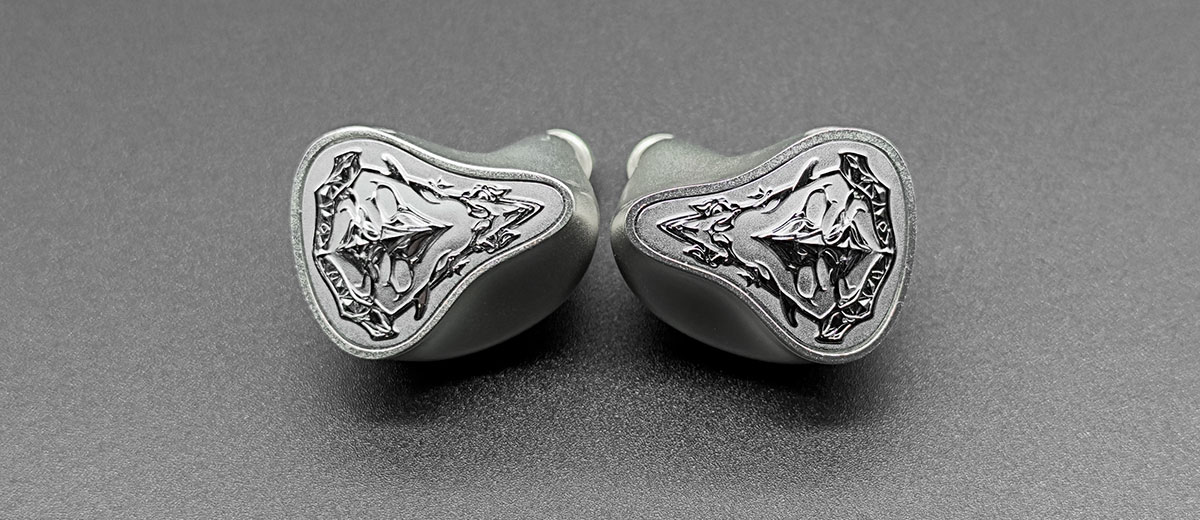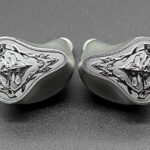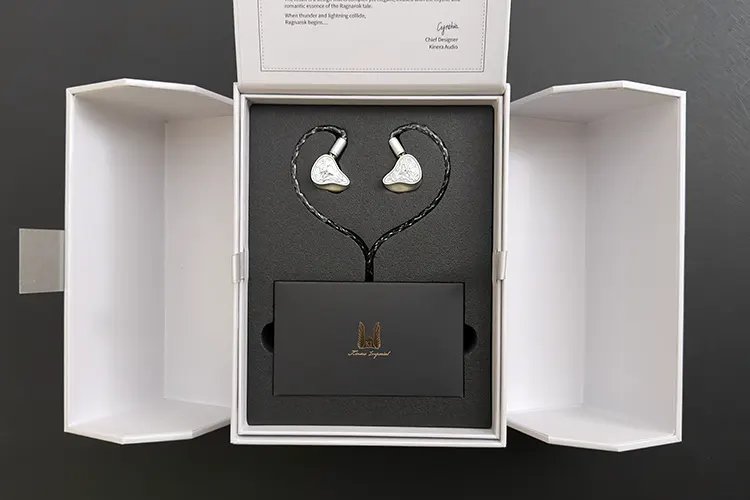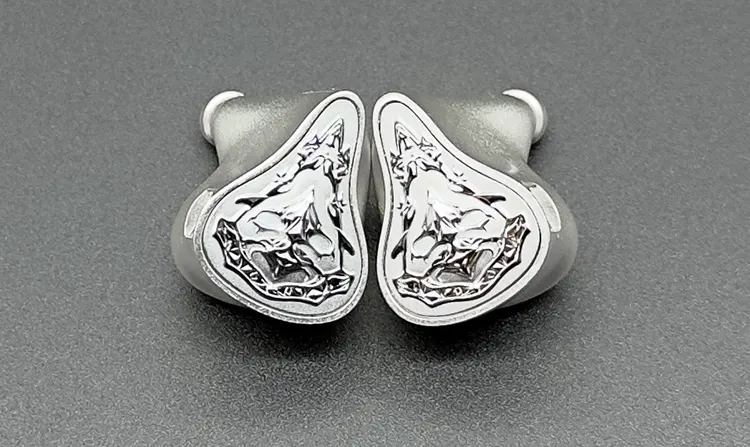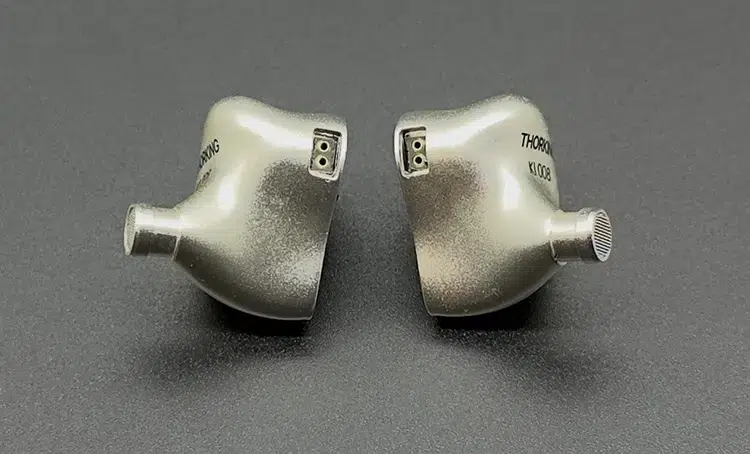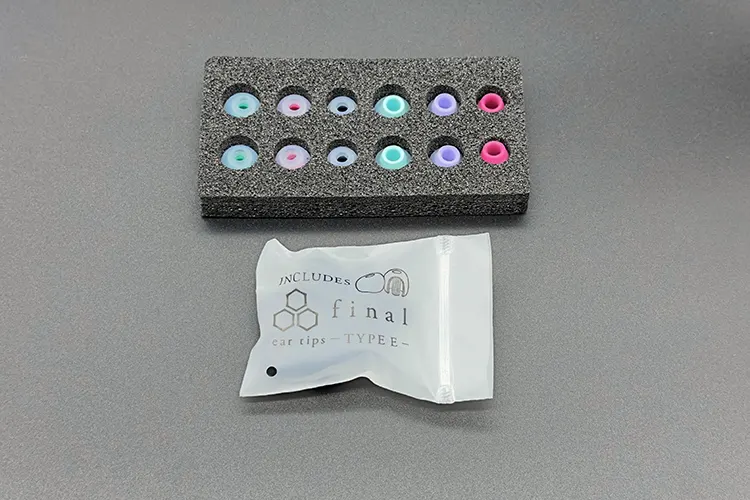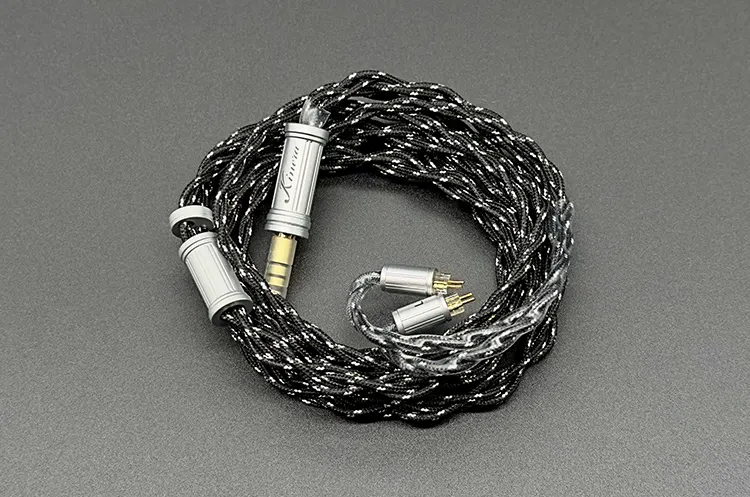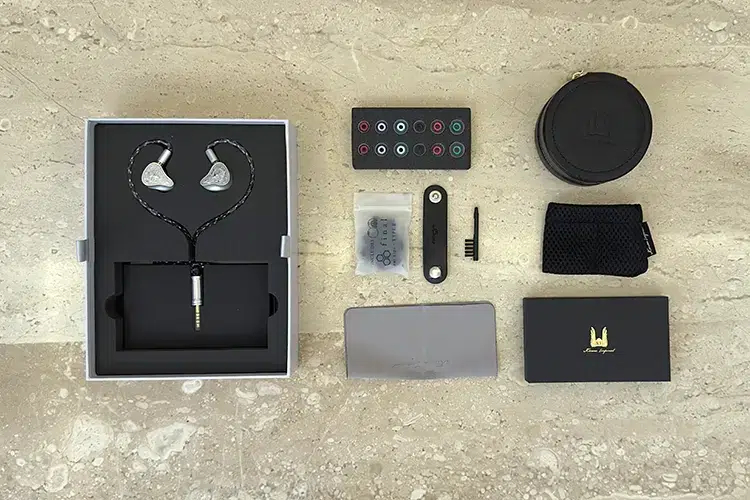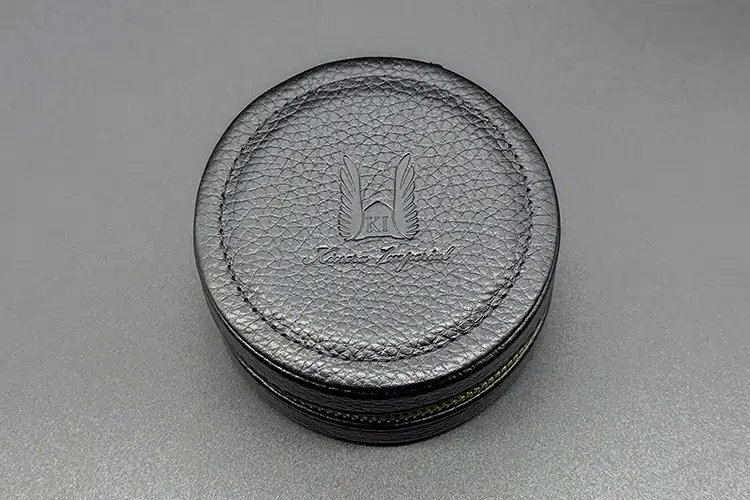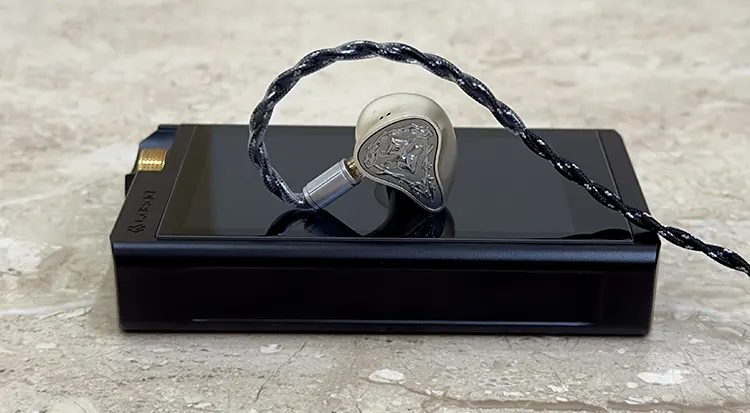Today, Nihal reviews the Kinera ThorKing, a flagship tribrid in-ear monitor featuring a 10mm dynamic driver, 6 BA, and a quad EST configuration. It is priced at $2499.
Disclaimer: This sample was sent to me in exchange for my honest opinion. Headfonics is an independent website with no affiliate links or services. I thank the team at Kinera for giving me this opportunity.
Click here to read more on Kinera products we have previously reviewed on Headfonics.
This post follows our current scoring guidelines, which you can read in more detail here.
Kinera has made significant progress, releasing a wide range of IEMs across all price segments, from budget to mid-range to flagship.
Having owned a couple of their IEMs, I have a deep respect for the brand’s philosophy of tagging releases with mythological figures and adding characters to their releases. Their IEMs, such as URD, Verdandi, LOKI, etc., have been widely praised.
I came to know about ThorKing in July last year when Kinera was working on the prototype. In September 2024, ThorKing was first teased at CanJam SoCal, where it received a few positive early impressions. The design had piqued my interest ever since.
In this review, we will take a deep dive into ThorKing’s tuning and compare it with other flagship IEMs to assess how it stands against some of its competitors.
Features
Kinera ThorKing features a well-balanced driver setup, including 1 dynamic driver, 6 balanced armature drivers, and 4 electrostatic drivers.
The 10mm High-Polymer Composite Diaphragm Dynamic Driver handles low frequencies, while six Knowles balanced armature drivers, two dedicated to the lower midrange and four for the higher frequencies. Additionally, four Sonion electrostatic drivers manage the ultra-high frequency range.
The internal cavity of the ThorKing is constructed from a copper-nickel alloy, which helps suppress vibrations, minimizing interference and distortion. Furthermore, a four-way crossover implementation ensures precise frequency distribution among the drivers.
Design
Kinera has consistently impressed me with its IEM designs, and if I’m not mistaken, it’s their first IEM with a metal shell.
Every bit about the IEM shows the skill Kinera has perfected over the years. For this release, instead of their typical colorful resin shells, they have selected a minimalist, although remarkably detailed, metal design.
The shells are available in two finishes: polished silver and matte brass. The polished version is prone to scratches and fingerprints, so I’m glad I got the matte brass variant. The shine and finish give off a premium feel, similar to fine silver ornaments.
The faceplate design is inspired by Norse mythology, depicting the legendary battle between Thor and Jörmungandr, where Thor slays the serpent with his hammer but is ultimately poisoned by its venom.
The shells have an ergonomic shape with smooth edges, ensuring a comfortable fit. The nozzle length is moderate, with an average width. There is mesh protection on the nozzles to protect from dirt and ear wax. The IEM connects via a 2-pin 0.78mm socket.
Overall, ThorKing has one of the most premium designs I’ve encountered of late, and it fully justifies its high-end price tag.
Comfort & Isolation
The shells on the ThorKing are slightly larger than average but not overly bulky and do not have significant weight. These shells are quite comfortable to wear, and I never felt discomfort during my time with them.
The smooth curves and edges ensure the shells do not press against the inner ears, causing discomfort.
A balanced weight distribution helps them stay very secure once you put them in ears, so you won’t have to worry about the IEMs being pulled out. Even during longer sessions, I never felt fatigued from the fit.
The isolation is very impressive, cutting off a lot of external noise, making it ideal for outdoor use. You should be comfortable even with a few people chatting around you. In my time with the ThorKing, I did not encounter any driver flex or feel any pressure buildup.
Ear Tips
Kinera has included a wide variety of ear tips, including a set of Final Audio E-type ear tips in five different sizes and six pairs of ear tips: three with a narrow bore and three with slightly wider bores.
I had expected better ear tips with the ThorKing. Kinera includes a better set of ear tips with the Verdandi, such as Azla Crystal Silicon ear tips and a few foam ear tips.
I am not a fan of Final’s E-type ear tips, as I feel the narrow bore cuts off some air. The other ear tips were just functional and did not impress me much.
I tried some aftermarket ear tips, among which I found the SpinFit W1 and Nostalgia Audio XWB ear tips fitting quite well. I prefer the W1 because of its snug and isolating fit. I wish they had included these ear tips with the package.
Stock Cable
The stock cable on the Kinera ThorKing is a 7N OCC 26AWG cable. The cable has a 4-core braiding featuring a black and silver pattern on the outer fabric. I expected a better-built cable from ThorKing. The build could have been a little better, as it feels a bit flimsy.
The cable does not tangle much when in use and maintains its shape when rolled up, making storage easy. The adapter, Y-split, cinch, and 2-pin connector are all built from aluminum alloy with a shiny surface that matches the color scheme of the shells.
I don’t care much about the cable’s modularity as the default 4.4mm adapter works with most sources these days.
As far as performance is concerned, the cable works just fine. I didn’t feel the need to change the cable, except to explore how different types affected the tuning.
Packaging & Accessories
The Kinera ThorKing arrives in a rather large and heavy box with a very premium and unique presentation. The outer packaging features a white and silver color scheme with lightning-like streaks on the sides, emphasizing the Norse mythology theme.
The word “THORKING” is printed in bold black font in the center of the box. The outer box opens from the middle, revealing a smaller white box that carries the IEMs and accessories.
Opening the lid reveals a compartment with the IEMs and cable neatly arranged in a foam cutout, with a small box holding a cleaning cloth and warranty card. Below this, another compartment houses the accessories, including a pack of ear tips and the carry case.
The carry case contains the Final Audio ear tips, a cleaning brush, and my favorite of all, a mesh pouch. For metal-shelled IEMs, I believe a mesh pouch is a must, as it keeps the IEMs safe from scratches.
Overall, the design, from top to bottom, exudes a premium feeling and high-end aesthetics. The presentation is one of the best among its peers. The accessories included are of high quality.
Carry Case
Kinera has included a round, black leather zippered case with the ThorKing. I remember Kinera providing a cramped carry case with their previous release, Verdandi. This case offers more space but still feels a bit tight. It is just large enough to store the IEM with the cable.
The top of the case features an embossed logo and the brand name. The leather feels premium, with a textured surface and stitching along the edges.
The zipper, which runs along the circumference of the case, has golden metallic teeth, adding a touch of elegance. Its hard edges suggest that it is strong and durable and can easily withstand some pressure
Sound Impressions
The following sound impressions of the Kinera ThorKing were completed using my main sources, the Lotoo Paw Gold Touch, the Astell&Kern SP3000, and Questyle CMA18 Master.
For the review, I paired the IEMs with stock cable and SpinFit W1 ear tips (size M).
Summary
When I first put the ThorKing in my ears, I wasn’t entirely sure what it was trying to achieve. The IEM has a lean tuning, and with an elevated treble profile, I knew I’d need some time to adjust; such tuning isn’t something I often encounter.
After spending a decent amount of time with it and pairing it with various sources, it began to reveal its true character.
The tuning is near-flat, aiming to be as neutral as possible, with just enough hint of fun and excitement. It’s sure to appeal to trebleheads with its airy and highly detailed treble region.
The bass is a bit subdued but kicks in when needed; that’s what is expected of ThorKing’s reference tuning.
The technical aspects are on par with other flagship offerings in its price range. While a touch of extra warmth could enhance the overall sound, it remains enjoyable, nonetheless.
Bass
The bass on ThorKing remains subtle, emphasizing its reference-style tuning. It lacks a bit of body but doesn’t compromise on quality. It has all the qualities one would look for in a satisfying bass response, such as texture, layering, and details, but the impact is a bit subdued.
The bass is controlled and lean, never dominating the mix but still providing a satisfying impact. The sub-bass goes deep when called for, while the mid-bass provides decent punch.
At times, the lack of impact leaves you craving a bit more depth. For example, bass guitar and cello plucks are present but feel weak, lacking the full impact to stand out.
This bass has the refinement of a dynamic driver to it. It has a natural, trailing decay that contributes depth without any bloom. There’s a slight warmth to prevent it from being dry. It inclines towards a balanced presentation, favoring clarity and texture over punch.
Those who enjoy a clean and articulate low end over a dominating or thick bass response would love this bass range. Sadly, this bass is not going to tickle the bass enthusiasts.
Midrange
ThorKing’s midrange is neutral and uncolored. It has a natural, realistic presentation with a clean timbre. Instruments and vocals alike sound authentic. It focuses on detail and resolution so that subtle nuances can come through with ease.
There’s just a touch of warmth, providing enough richness without making it sound too clinical, but you’d miss lushness or fullness. The midrange isn’t very prominent or full, but its clarity and detail make up for it.
The lower midrange does not get enough help from the bass shelf; thus, it lacks body, but I would not label it extremely lean. That said, male vocals and lower instruments sound a little less authentic.
The upper midrange extends quite well. With wonderful clarity and definition, it pulls out nuances and textures in vocals and instruments without sounding harsh or tiring. This overall adds a lot to a transparent and revealing midrange.
In case one prioritizes a thick, warm, and musical midrange, ThorKing’s midrange can appear a bit dry and less engaging.
Treble
I was hoping the treble would be too sharp and test my tolerance, but luckily, it proved to be smoother than I had hoped for. To be honest, it did take some time to adjust to this treble, and now I find it to be among the best in its price range, offering exceptional detail and resolution.
It remains natural and very realistic, with a touch of sharpness. There is an excellent sense of airiness with plenty of sparkle and shimmer without being artificial or too bright.
The decay of treble notes is very well controlled, enabling notes to linger naturally without ever being abrupt. Instruments like cymbals and hi-hats are accurately reproduced with the utmost refinement.
It never feels too fast, overly sharp, or slapping details in your face. Flutes and other treble-centric instruments sound great, having a delicate, textured feel that adds to their presence in the mix.
Despite its high degree of detail, the treble is not overly shouty or overemphasized. This treble helps in maintaining a clean and coherent timbre, which the IEM aims for.
This treble will definitely be a great option for trebleheads. Those who prefer a treble-shy tuning would find it sharp and a bit fatiguing.
I would also recommend pairing the ThorKing with a capable source for experiencing a smooth treble response.
Staging & Dynamics
One of the first things that struck me about ThorKing is its technical ability. The soundstage is wide, stretching far with a satisfying sense of depth and height, so everything sounds roomy and well-layered.
It never sounds artificially stretched, just naturally open, with instruments able to breathe without sounding crowded.
A clean timbre and solid resolution make imaging precise and accurate. The instruments get ample space to breathe, thus making the presentation very detailed.
Nothing gets smeared or lost in the mix. There’s a great sense of separation, so even on complex tracks, everything exists in its own space.
The detail retrieval on ThorKing is superb. Micro-details are delivered seamlessly without feeling forced or overly forward. Instead, they come through in a way that feels natural and organic.
I catch myself paying attention to subtle details and nuances without having to listen hard to detect them. The dynamics are much improved when you pair ThorKing with a powerful source.
Click on page 2 below for my recommended pairings and selected comparisons.

